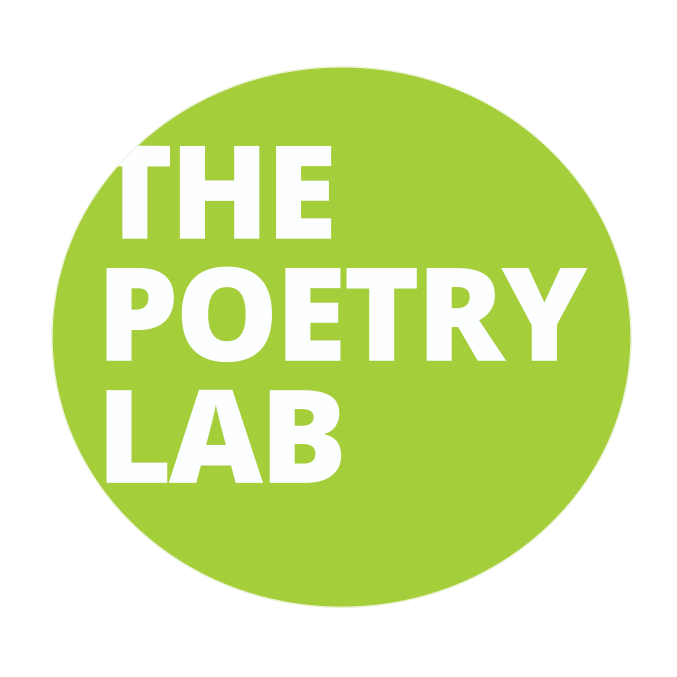3 Observable Prose Poetry Forms to Try for Yourself
Some people collect thimbles. Some collect spoons. For years, I’ve collected words and phrases used to describe the prose poem.
Perhaps you've heard of the more common terms like "hybrid" and "paradox". But what about describing prose poetry as "anomaly", or the idea that the prose poem "offers an escape from the invisible chains of the superego?" The language we use to describe the prose poem can be more mystifying than the poems themselves.
Bob Hicok's "Prose Poem Essay on the Prose Poem" exemplifies this duplicitous scholarship:
For instance: there was this guy I knew in this room of needing someone to look out the window and feel how the field of a prose poem grows, how like an acre it spreads across the page with the sense that we need more land to let language have its say. There are poppies in the field, orange as if all the world wants to grow up to be California, there’s a child buttering an ax, a cow chewing back and forth, eating the text of grass. The prose poem’s the Texas of poetry, you got miles of miles and miles, then suddenly it’s New Mexico and over, this whooping and hollering, this rodeoing of prosing.
Hicok does what many prose poetry scholars do: deliberately obscures our understanding while attempting to clarify it. This is what I love about the prose poem, but I understand how others may find it frustrating. The prose poem asks you to let go. It's giving Lotus Sermon. It's the Buddha holding up a single lotus flower and saying nothing at all. The prose poem reminds us that we don't know what we don't know and asks us to be comfortable with that uncertainty.
This is why I believe prose poems are becoming more and more ubiquitous. As a form, they answer to the tenuous place where we currently find ourselves. Somewhere between apocalypse and innovation.
***
I have written about, talked about, and taught about the prose poem in many different formats over the years. If you’re studying the form, I encourage you to check out all of those sources in addition to this one.
Here, I’d like to look at three of the observable forms a prose poem can take: The object-thing poem, the list or catalog poem, and the definition poem.
basic definition of a prose poem
As we begin, let's establish this baseline for our time together. What is a prose poem?
A prose poem is a block of text that retains the qualities of poetry. It may, in fact, not be a form at all, but a genre onto itself. Within that genre, there are what I call observable forms—or poems that exist whose logic can be imitated thereby stipulating a new “form”.
When working with prose poetry we have to accept that there the spark of rebellion that prompted the origination of the form is still actively living within it; that there are no actual rules; and that new operating procedures are being invented and reinvented all the time. That’s why I call these observable forms, because I have observed them in the work of prose poets, and therefore they exist.
We can reference examples of the forms, as well as departures and detours, reenactments, and reframings. We can accept that the foundations of these forms and their parameters were created in real-time beneath the feet of the poet writing them and that in this way a prose poem is a brick that lays its own foundation; a prose poem is a paradox that vanishes before it can be wrangled into the cold, dead grip of academia.
Ooo, that sounds like something worth exploring doesn’t it? Let’s dig in.
Object-Thing Poem
Billy Collins tells us that object poems are a form of poetry that use items as their subject matter. This can include everyday objects like toothpaste, unusual or strange things like your rare collection of Garazeb Orrelios action figures, special objects like a golden nose ring, or things with sentimental value like dead flowers pressed between the pages of a first edition of For Whom the Bell Tolls. Object poems focus on a singular thing, exploring it physically and objectively for the reader.
The object-thing poem was observed by Robert Bly in 1998 as one of the three styles of prose poetry. The other styles are fables (popularized by poets like Russel Edson and David Ignatow), and something called “post-Romantic fire-prose” which I have never found a true example of, and have no idea what he means.
If you’ve ever read Tender Buttons by Gertrude Stein, then you have encountered object-thing poems. Stein worked to unearth the everyday mundane (a feminist ideal) and was also seen as the mother of modernism. It is fascinating to note that the prose poem pre-dates the birth of free verse poetry, and marked a move toward colloquial speech in poetry (a move away from verse). What I take all that historical context to mean is that the choice of object or thing in an object-thing poem holds tremendous power. While a mundane little prose block about a box or a red shoe may seem simple and insignificant, the choice is deliberate.
A great modern example of this is the collaboratively written book X Marks the Dress: A Registry by Carol Guess and Kristina Marie Darling. Here Guess and Darling tell the story of a doomed marriage through a series of collected wedding ephemera. In one of my favorite poems from the book, “Unworn Garter” the meanings of the chosen objects begin to coalesce around their shared tragedy.
List or Catalog Poem
Edward Hirsch explains that a list or catalog poem takes an inventory of people, places, things, or ideas. This ancient device, a structure of parallelism, is found in literature around the world. In lineated verse, a list poem may also be referred to as a litany. However, “litany” has other connotations as well. Its Greek root implies “prayer” or “supplication,” which is why I prefer to say list poem (because I prefer secular usages). In contemporary works, a litany suggests any long, syntactically repetitive work, such as Whitman’s “Song of Myself.”
“The list is, perhaps, the most archaic and pervasive of genres ”
One of the elements of craft that prose poems use particularly well is parataxis. We can observe a moment of parataxis within a prose poem when a list without hierarchy appears in a poem. Here is an example from Jane Wong’s “Everything:”
The Pledge of Allegiance is a building ledge, an alleged crime, a leg crossed over another leg, a plea gone askew, a glance shared in a room with someone else who looks like you
Hundreds of toxic wild boars are roaming across northern Japan and it would be a mistake to identify with them
In 1960, my grandmother holds no knife in no tall wheat.
In the above passage, we receive the list that begins with the Pledge of Allegiance, but as we can observe from the unfolding lines, the poem is not entirely made up of a list, instead it leaps from subject to subject as it traverses stanza breaks. I bring this up to note that a list is both a form of poem and a technique to use within a poem.
Here is an example of a list poem from Jubi Arriola-Headley that innovates the form, creating its pattern of logic as it unlaces itself across the page.
Definition Poem
A definition poem mirrors a dictionary definition in its physical structure and explicative writing style. It may contain numbered sentences to designate variant usages or signify alternate meanings based on the different parts of speech.
A definition poem is an invented form, and unlike a list or object-thing poem, I have never encountered any scholarship on it other than my observational study. I first encountered the definition poem in A. Van Jordan’s M-A-C-N-O-L-I-A. I have seen similar poems in the work of Franny Choi, and although Choi does not explicitly credit Jordan for the influence, the poet studied under him for her MFA, so I can extrapolate that his body of work had an influence.
Another reference point you might consult for your definition poem is the Dictionary of Obscure Sorrows by John Koenig (which started as a website and later became a book). In the Dictionary, nonce words are created and given meanings, often in very poetic utterances. These definitions captured the zeitgeist so well that we might credit today’s concept of “main character energy” to this post to the dictionary, added 11 years ago:
sonder
n. the realization that each random passerby is living a life as vivid and complex as your own—populated with their own ambitions, friends, routines, worries and inherited craziness—an epic story that continues invisibly around you like an anthill sprawling deep underground, with elaborate passageways to thousands of other lives that you’ll never know existed, in which you might appear only once, as an extra sipping coffee in the background, as a blur of traffic passing on the highway, as a lighted window at dusk.
Here’s one of my favorite definition poems:
Final Thoughts
“Space opens before and behind [the prose poem], sometimes like closed rooms, sometimes like expanding fields. It understands both prose and poetry, and it comfortably inhabits the mutual space they offer.” - Paul Hetherington and Cassandra Atherton
In choosing to talk about observable forms of prose poetry, I have forgone a conversation about what it means to write poetry in prose. How to traverse the universe of the sentence and the planetarium of the poetic craft. These are conversations worth having in future articles (and during the next Brick Box Paradox, of course!), but I hope the example poems included here have expanded your understanding through concrete instances of play within the genre. Note that the poems above are not simply miniature narratives or short-short fiction stories. There are craft techniques for poetry used throughout these selections and I encourage you to continue to investigate what makes prose poetry unique and rebellious as you try your hand at these forms.
There is no right or wrong way to do this, poet. Remember:
“you got miles of miles and miles, then suddenly it’s New Mexico and over”
Keep reading. Keep rodeoing. Keep writing.
This article was published on August 15, 2023. Written by:








